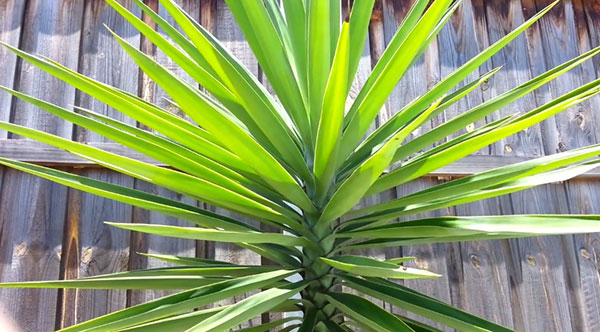When you know what to plant next to this or...
Yucca elephantipes factsheet
If you want to find growing tips on Yucca elephantipes (synonym – Yucca gigantea) in an old plant book, it is quite unlikely you will find this plant mentioned there. It has become a popular indoor plant only recently.
✔ We Released The Yucca HandBook
CLICK HERE TO LEARN MORE >>
This species is native to Mexico, Honduras, Costa Rica, El Salvador, Guatemala, Belize. It is usually smaller than 20 feet in height though some people state that in its native environment the mature plant reaches 30 feet.
It has a large trunk or sometimes several trunks resulting from an inflated lower base which resembles elephant’s foot. The leaves of this large succulent are long , green and sword-shaped with pointed tips.
The edges of the leaves are spineless and if you compare them with the leaves of other plants in this genus, you’ll discover that they are not as sharp. That is why the common name of yucca elephantipes is spineless yucca. Its other common names are soft-tip yucca, itabo, blue-stem yucca.
This plant is a flexible one and it is easy indeed to maintain it. Spineless yucca prefers sunshine and is able to handle various temperatures. When watering, try not to overdo it as it can cause rot. The advantage of this species is that it is relatively free from pests issues.











